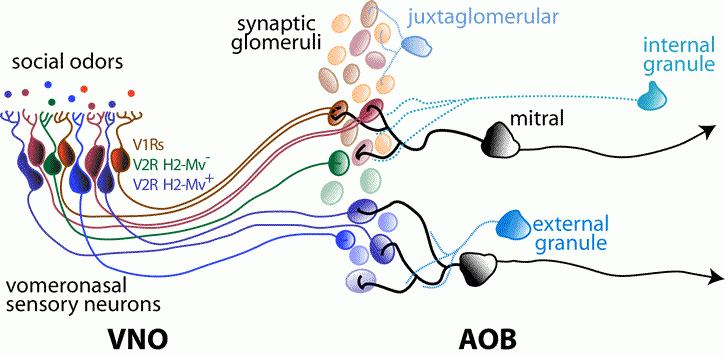Overview
The goal of the Meeks Lab is to better understand the mechanisms by which nonvolatile olfactory cues, including pheromones, guide animal social and reproductive behaviors. The neural pathway that detects and processes this information is called the accessory olfactory system, or AOS. This system begins in the nose in a small blind-ended tube called the vomeronasal organ (VNO), which sends information from the periphery into the first AOS neural circuit – the accessory olfactory bulb (AOB).
The AOB is a very compact (less than 1 mm3) neural circuit that contains at least four distinct types of neurons. However, we know relatively little about the specific connections between these neurons, and even less about how they “sculpt” the information coming into the circuit. Despite its small size, disruptions in this circuit cause profound changes in animal social and reproductive behavior. Recent innovations have allowed more systematic exploration of the AOB and its various neurons.
It is our goal to use new tools and ideas to establish a comprehensive description of the computations performed by the AOB and, ultimately, those computations' impact on animal behavior.
